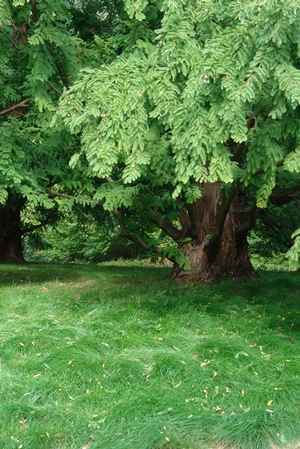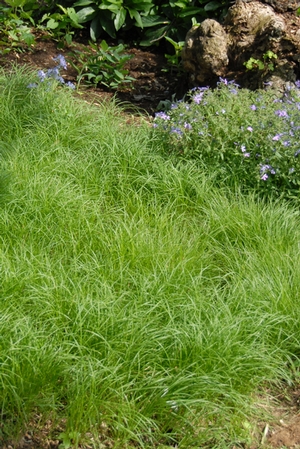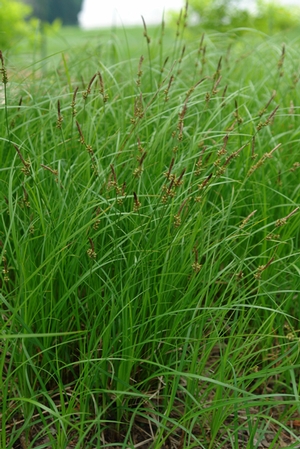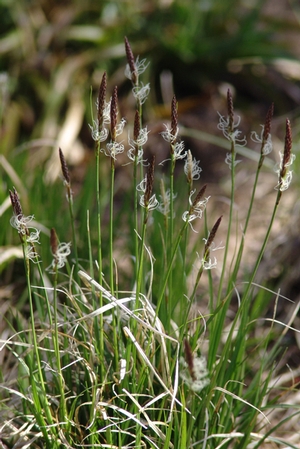Carex pensylvanica
Common: oak sedgeCarex pensylvanica LP32 - 32 per flat
- Height: 8"-10"
- Spread: 12"-18"
- Spacing: 10"
- Hardiness Zone(s): 4-8


Carex pensylvanica LP32 - 32 per flat



With its tough disposition and spreading habit, this native sedge makes an excellent shade groundcover. Fine texture and fountaining habit give this sedge a soft appearance that is lovely as an underplanting for bolder shade perennials or on its own as a shade lawn. Great in containers too! Easy to grow. Happiest in the company of oaks, but who isn't?
Prefers dry, well-drained soils in full to part shade. Spreads via rhizomes. Propagate by seed or division of clumps every few years. Cut foliage to the ground in early spring before new growth occurs if needed to keep a tidy appearance. Use as a border or groundcover in shady areas.
With its tough disposition and spreading habit, Carex pensylvanica makes an excellent shade groundcover. Fine texture and fountaining habit give this sedge a soft appearance that is lovely as an underplanting for bolder shade perennials or on its own as a shade lawn. A very easy to grow sedge that tolerates Black Walnut, it does well as a lawn substitute or as a shade border edging plant.
Native to eastern and central America, Pennsylvania sedge is commonly seen in oak-dominated forests in Pennsylvania but range through open woods and thicket. It prefers dappled sunlight to light shade and average soil moisture. It can tolerate acidic woodlands, periods of drought, and is disease and pest resistant. Spreads by rhizome or by seed and does not form clumps like Carex amphibola, a similar featured sedge.
Carex pensylvanica is well-regarded for its slowly spreading nature, creating a carpet of green in troublesome areas within a few years. Sedge only needs to be mowed or cut back once a year for breezy effect but can be mowed 2-3 times a year at 3” height to maintain verdant lawn appearance. Like many other Carex spp, it has faunal associations and is forage and habitat for Lepidoptera larvae and for different birds and small mammals.